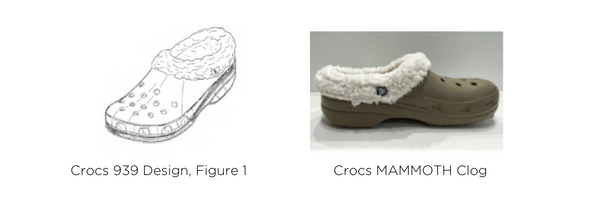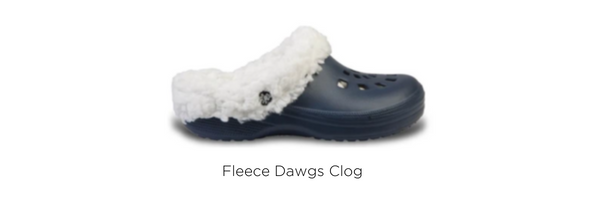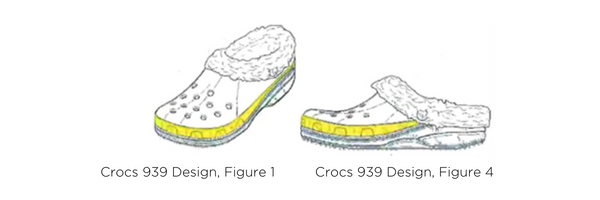This article was prepared with the assistance of Mimoza (Mimi) Gjelaj during her term as an articling student.
Earlier this fall the Federal Court of Canada issued a rare decision concerning industrial design infringement and reaffirmed several points of law favouring holders of industrial design registrations in Canada seeking to enforce their rights.
In Crocs Canada Inc v Double Diamond Distribution Ltd (2022 FC 1443), released on October 21, 2002, the Court found that Double Diamond Distribution
Ltd (Double Diamond) had infringed an industrial design registration owned by Crocs Canada Inc (Crocs) related to their clog-style footwear.
The Court showed a willingness to uphold the validity of an industrial design registration despite inconsistencies in the drawings contained therein, reaffirmed that infringement and validity are to be assessed from the perspective of the informed consumer,
and reinforced the strength of the accounting of profits remedy.
Background
At issue was Crocs’ Industrial Design Registration No. 120,939 (939 Design) for its MAMMOTH line of clogs. Figure 1 of the 939 Design is reproduced below, alongside a photograph of an exemplary MAMMOTH clog embodying the design:

Since 2008, Double Diamond, a Saskatchewan corporation, had offered for sale and sold in Canada “Fleece Dawgs”, a line of clog-style footwear, an example of which is depicted below.

In November 2017, Crocs filed suit against Double Diamond, asserting infringement of the 939 Design. Double Diamond denied infringement and counterclaimed for invalidity. The central issues were thus whether the 939 Design was valid, and if so,
whether Double Diamond had infringed on the registered design.
Validity
Double Diamond attacked the validity of the 939 Design on several grounds including on the basis that the 939 Design allegedly includes multiple, distinct designs contrary to the Industrial Design Act and Regulations. The Act and Regulations permit variants of a design in a single registration but not distinct designs. Double Diamond noted that there were discrepancies and inconsistencies in the figures, including in the placement of the fleece collar in Figure 1 as compared to Figure 4 of the 939 Design. As shown below, the highlighted portion is partially obscured by the fleece in Figure 4 but is unobscured in Figure 1.

However, the Court, relying on expert evidence adduced by Crocs, concluded that Figure 4 was simply an insubstantial variation in which a portion of the fleece collar was displaced, and not a wholly separate design. Double Diamond did not put forward an expert of their own.
Infringement
The proper test for infringement of an industrial design was not in dispute: the Court must determine whether the allegedly infringing design differs substantially from the registered design.
This analysis involves the following steps:
- Examine the prior art and the extent to which the registered design differs from any previously published design, since the closer the registered design is to the prior art, the narrower the protection it will be afforded, and vice-versa;
- Assess the design for any utilitarian function or any method or principle of manufacture or construction;
- Examine the design itself to determine the scope of protection based on the figures and accompanying description in the registration; and
- Conduct a comparative analysis of the registered design and alleged infringing article, taking the first three factors into account.
The Court confirmed that the infringement analysis is to be assessed from the perspective of the informed consumer who – importantly – is deemed to be familiar with the relevant market and prior art, rather than the consumer with an imperfect
recollection. Crocs’ expert evidence as to the knowledge of an informed consumer assisted the Court, who accepted that the 939 Design was entitled to a broad scope of protection because there was nothing like it in the prior art.
Ultimately, Double Diamond’s Fleece Dawg products were found to infringe.
Accounting of Profits
An accounting of the infringer’s profits is a remedy provided for by the Industrial Design Act. However, Double Diamond alleged that Crocs’ delay in initiating the proceedings, namely roughly 9 years after the launch of the Fleece
Dawgs shoe in Canada, disentitled Crocs to a finding of infringement and any associated remedies, including an accounting of profits.
The Court was unwilling to disallow Crocs’ claim or entitlement to the accounting of profits remedy. The Court appeared to be more concerned with Double Diamond’s own delay in raising this argument until trial and was otherwise not
convinced that Double Diamond had established any bar to the equitable relief of an accounting of profits elected by Crocs.
Additionally, Double Diamond failed to adduce sufficient evidence regarding the alleged expenses attributable to Fleece Dawgs footwear. As a result, Double Diamond was effectively required to disgorge to Crocs their gross sales of its Fleece Dawgs products
over the relevant period.
Take Away
This decision has provided valuable guidance on the analysis of validity and infringement of an industrial design registration in Canada, as well as highlighting the importance of expert evidence in such cases.
For more information, please reach out to a member of our Industrial Designs practice group or our IP Litigation & Enforcement group.
The preceding is intended as a timely update on Canadian intellectual property and technology law. The content is informational only and does not constitute legal or professional advice. To obtain such advice, please communicate with our offices directly.
Related Publications & Articles
-
A decision to watch: Groupe Swatch v Office québécois de la langue française
On October 27, 2025, the Tribunal administratif du Québec rendered a decision setting aside an order of the Office québécois de la langue française ordering Groupe Swatch to add a “sufficient presence...Read More -
Strategic considerations: Canadian post-grant patent administrative procedures
The Canadian patent system provides multiple post-grant administrative procedures that allow both patentees and third parties to revisit the scope or validity of a patent without going to court.Read More -
Moral rights and contractual gaps: the case of a hidden mural
The decision in Bachand c Mural underscores the importance of considering moral rights when commissioning public art.Read More
